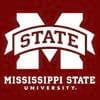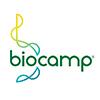Evaluation of Commercially Manufactured Animal Feeds to Determine Presence of Salmonella, E. coli and Clostridium perfringens
Animal feed can potentially expose animals to pathogens which may lead to infection or colonization of the gastrointestinal tract. Feeds can become contaminated with bacterial pathogens during harvesting and transportation of the ingredients, processing at the feed mill, transportation to the farm or during storage. These bacteria have the potential to colonize the animal leading to disease of the animal and during processing may lead to contamination of the carcasses with foodborne pathogens. The objective of the study was to establish if commercially manufactured animal feed serves as a source of contamination of Salmonella, E. coli and Clostridium perfringens. Four commercial feed mills and the research feed mill at Auburn University were sampled. A total of 140 samples (60 of ingredients and 80 of feeds) were collected from 5 different locations within each feed mill: ingredient receiving, post mixing, post pelleting (hot sample), post cooling the pellets and at loadout. All samples were assayed for Salmonella, E. coli and Clostridium perfringens using selective media. Resulting counts were log10 transformed and then analyzed using ANOVA, if significant (P<0.05), means were separated using Tukey HSD. The data shows that Clostridium spp. load in corn meal varied between the 5 feed mills (0.90 – 3.63). Feed mill A (0.90) and feed mills B, C and E (3.48, 3.48 and 3.63, respectively) were determined to be significantly different. For soybean meal, feed mill A showed the highest E. coli (3.00) counts, being significantly higher compared to the rest of the feed mills (B-E). From the processed samples, post mixing showed significance in E. coli values between feed mills C and B, with feed mill B having log10 4.84 CFU/g. In addition from processed feed Clostridium perfringens was isolated and confirmed via PCR from two samples from two different feed mills. No recontamination of E. coli was observed after pelleting the animal feeds and no Salmonella contamination was detected in ingredients or processed feed throughout the study. For future research, greater attention should be placed on Clostridium perfringens contaminated animal feed as a possible source of disease transmission to the birds.



What is the problem of finding E.coli and Clostridium perfringens in the feed after pelleting? Is it the simple presence or concentration of these bacterias? The reason for my question is that, in the gut of healthy birds we found concentrations of up to 10E4 or even higher of E. coli and C. perfringens without causing any problems. According to Disease of Poultry 14th Ed. 2020, the presence of E. coli in the lower intestine tract is benefical, aiding in growth, development and inhibiting other bacteria like Salmonella.
Don't you think that sometimes the problem is not the microbiology of food, but the disruption of the animals' microbiota?
A very comprehensive detailed subject.
Thank you very much, sir, on the update.
Regards
Daniel












